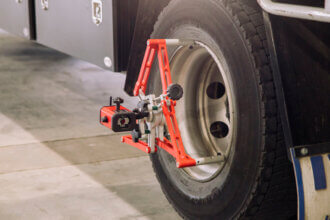NY mayor plans to get rid of diesel trucks in unusual way
New York City officials declared a plan for a new cargo network aimed to “restructure cargo spreading and lessen over-reliance on diesel trucks.”
The “Delivering Green” Plan is proposed by Mayor Bill de Blasio, the New York City Department of Transportation (DOT) and the New York City Economic Development Corporation (NYCEDC). According to the plan will be allocated “$ 38 million in new funding to support trucking” to lower the number of diesel trucks in NY.
“The DOT claims that truck traffic across the Hudson River went up to more than 50% from January 2020 to September 2021. If no action is taken, the increased need for freight transport will result in tens of thousands of trucks entering the city every day, while the city’s network of streets and bridges remains intact. This unchecked growth in trucks’ supplying is simply unacceptable – for communities, the streets and the environment,” New York City officials told in a press release.
While 90% of New York City’s goods are currently transported by trucks, the plan offers short-term and long-term solutions for moving more cargo by water, railways and other more sustainable means of transport, including cargo bicycles and other forms of transportation, officials say, small green cars to deliver the last mile.
“As our demand for freight transport continues to grow, we can’t continue the historic mistake of relying on larger, more polluting diesel trucks to handle cargo,” said Transport Commissioner Hank Gutman. “They are destroying our infrastructure, damaging public health and quality of life in our neighborhoods, clogging up our already crowded streets and accelerating climate change. We have to change thr course.”
The Sustainability Plan has five specific targets to reduce the number of diesel trucks in New York:
• Make the last mile more efficient – promote after-hours delivery and expand neighborhood pickup areas. In addition, the plan promotes programs to consolidate delivery of goods to one location for multiple recipients and micro-distribution spaces where supplies can be converted to sustainable transportation methods for the last mile for recipients.
• Greening the last mile – Support the transition to a zero-emission truck fleet, help move goods from trucks to commercial cargo bikes, and explore other sustainable small-load delivery methods.
• Build a culture of compliance – Seek federal funding to implement technologies that will improve truck compliance and support industry education and advocacy.
• Shifting cargo from road to water – Create opportunities for maritime freight transport by upgrading marine terminals, increasing access to the coastline for maritime shippers, and supporting private sector MoS initiatives.
• Shifting goods from road to rail – Increase the diversion of goods from trucks to trains by expanding transshipment capacity in the city and modernizing major rail freight assets.




